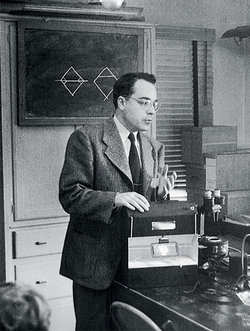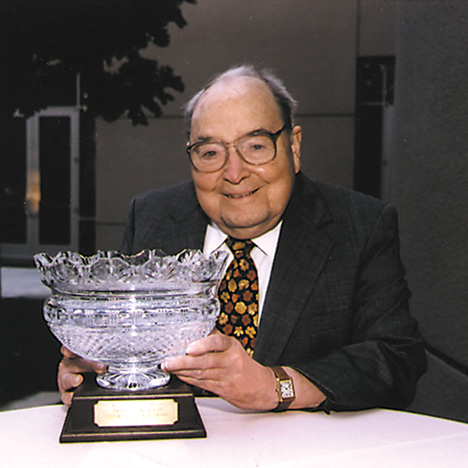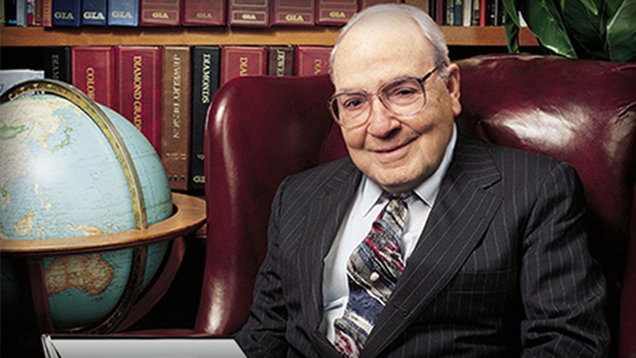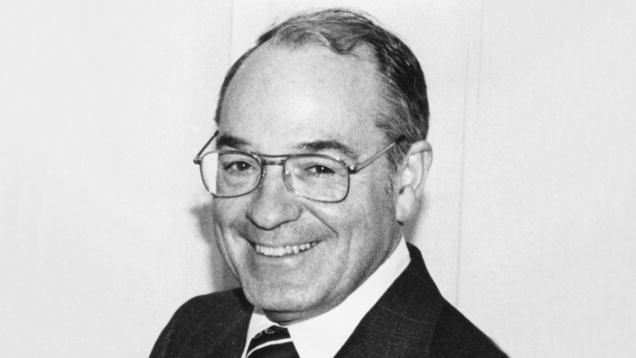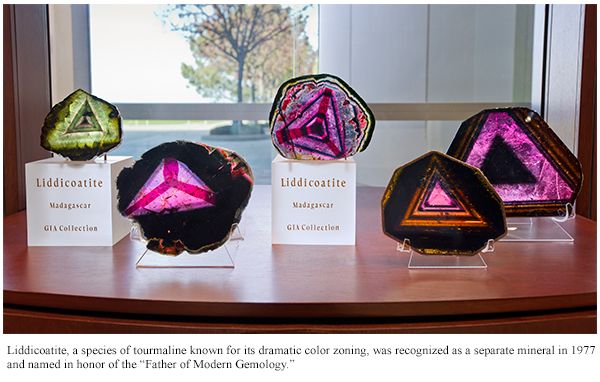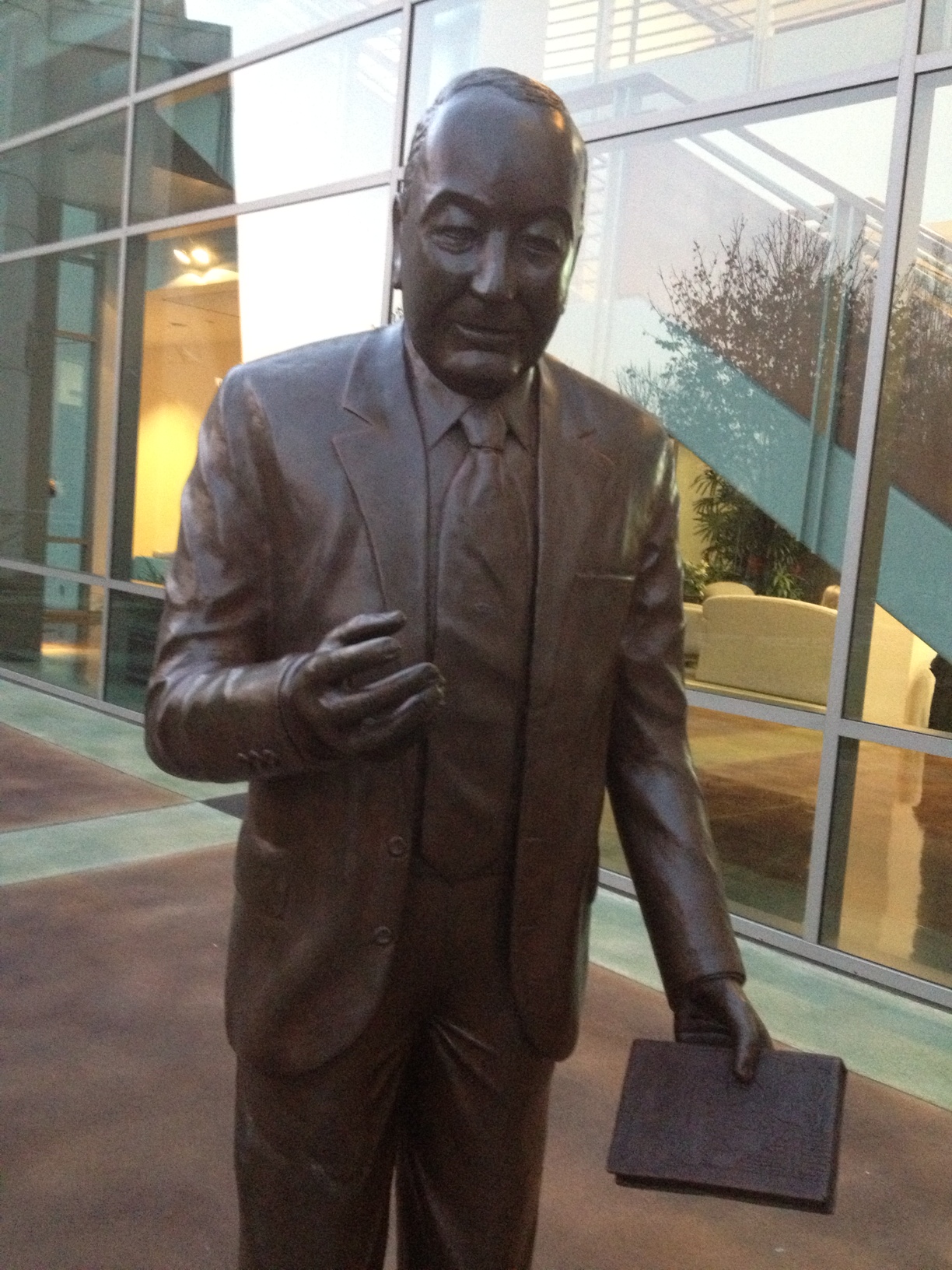July 26, 2002 | DENNIS McLELLAN | TIMES STAFF WRITER
Richard T. Liddicoat, whose contributions to gemological education, diamond quality grading, gem identification, gemological research and instrument development earned him an international reputation as the "father of modern gemology," has died. He was 84.
Liddicoat, the former president and lifetime board chairman of the Carlsbad-based nonprofit Gemological Institute of America, died Tuesday in his Los Angeles home after a long illness."He really was one of the best-known figures in the gem world and, of course, the Gemological Institute of America is the foremost educational and research organization in the gem world," said Anthony R. Kampf, curator of mineral sciences at the Natural History Museum of Los Angeles County.
"If anyone could be called the dean of the jewelry industry in very loving and genuine terms of respect and endearment, it would be this man--Dick Liddicoat," said Michael Kazanjian, chairman of a wholesale jewelry company in Beverly Hills, who knew Liddicoat for 40 years and served on the Gemological Institute's board of governors.
Liddicoat was known throughout the jewelry industry and gemological community for his pioneering efforts in advancing the science of gemology and for his innovations, most notably his development of the International Diamond Grading System in 1953.
The method, which has become the industry standard, evaluates diamonds on the basis of the four Cs: cut, color, clarity and carat weight.
"Everyone was using his own system, to the extent that the terminology was so varied it was impossible to know the true quality of an individual stone," Liddicoat recalled in a 1979 interview with The Times.
"We also felt some systems were meaningless, giving the dealer no clear guide in setting the price of a stone," Liddicoat said. "With our system, the dealer knows, sight unseen, the quality of the diamond."
Dawn Moore, West Coast sales director for Harry Winston in Beverly Hills, which specializes in high-quality diamonds, said: "Mr. Liddicoat, being the architect of the grading system for diamonds, was someone so pivotal in the industry that he allowed a jeweler such as Harry Winston" to be in business.
"There are other companies that offer diamond grading, but they're not as prestigious or as accepted," Moore said.
Born on March 2, 1918, in Kearsarge, Mich., Richard Thomas Liddicoat Jr. was the son of a professor of engineering at the University of Michigan in Ann Arbor.
Inspired by his two immigrant miner grandfathers to explore the geology of the surrounding area as a boy, Liddicoat went on to earn a bachelor's degree in geology from the University of Michigan in 1939 and a master's in mineralogy in 1940.
Shortly after earning his master's, Liddicoat learned that his mineralogy professor had recommended him for an opening as assistant director of education at the Gemological Institute of America in Los Angeles.
Liddicoat jumped at the opportunity.
"After years of school, I was ready to do something else," he said in a 1980 interview. "The idea of gems and Los Angeles really had appeal."
The Gemological Institute of America was founded in 1931 by Robert M. Shipley, a former Wichita, Kan., jeweler whose goal was to fill the vacuum in gem education.
Shipley started by delivering a series of lectures through USC. They were so successful that he established a correspondence program for gemology. Until that time, there was no formal gemology program in the United States.
Today, the Gemological Institute has three resident education programs in the United States and affiliates in eight other countries and is considered the world's premiere educational institute for gemology.
Before the educational efforts of the institute, a Los Angeles colored stone dealer, George Houston, said in a 1979 Times article, jewelers learned the business by the "seat of their pants."
"The old-timers, particularly in New York, resisted any formalized education, which GIA was advocating," he said, referring to the institute. "But GIA persevered, convincing virtually everyone that education was just as important to the jewelry and gem business as it was in any other field of activity."
Within a year of Liddicoat's hiring as an instructor, he was named director of education at the institute. When World War II broke out, he served as a weather officer on aircraft carriers in the Pacific.
Returning to the institute after the war, he was named director of research and later director of education and research.
Liddicoat succeeded Shipley in 1952 as executive director (later retitled president) and led the institute until 1983, when he retired as president and was unanimously elected chairman of the board.
In 1992, he was named chairman of the board for life.
Liddicoat served as editor in chief of Gems & Gemology, the institute's professional journal, from 1952 until his death. He also wrote "The Handbook of Gem Identification," "The Diamond Dictionary" and "The Jeweler's Manual."
He also was a founding member of the board of directors of the Gem and Mineral Council of the Natural History Museum of Los Angeles County and was instrumental in the growth of the museum's gem collection.
In 1977, in recognition for his contributions to gemological knowledge and education, the National Museum of Natural History named a new gem species of tourmaline in his honor: Liddicoatite.
"It's easy to talk in superlatives about this man because he was really a pioneer in transforming our industry into something much more credible ... than it ever could have been," Kazanjian said.
Liddicoat's wife of 56 years, Mary Imogene "Gene," died in 1995.
A celebration of Liddicoat's life will be held at 4 p.m. Aug. 24 at institute headquarters, 5345 Armada Drive, Carlsbad.
July 26, 2002 | DENNIS McLELLAN | TIMES STAFF WRITER
Richard T. Liddicoat, whose contributions to gemological education, diamond quality grading, gem identification, gemological research and instrument development earned him an international reputation as the "father of modern gemology," has died. He was 84.
Liddicoat, the former president and lifetime board chairman of the Carlsbad-based nonprofit Gemological Institute of America, died Tuesday in his Los Angeles home after a long illness."He really was one of the best-known figures in the gem world and, of course, the Gemological Institute of America is the foremost educational and research organization in the gem world," said Anthony R. Kampf, curator of mineral sciences at the Natural History Museum of Los Angeles County.
"If anyone could be called the dean of the jewelry industry in very loving and genuine terms of respect and endearment, it would be this man--Dick Liddicoat," said Michael Kazanjian, chairman of a wholesale jewelry company in Beverly Hills, who knew Liddicoat for 40 years and served on the Gemological Institute's board of governors.
Liddicoat was known throughout the jewelry industry and gemological community for his pioneering efforts in advancing the science of gemology and for his innovations, most notably his development of the International Diamond Grading System in 1953.
The method, which has become the industry standard, evaluates diamonds on the basis of the four Cs: cut, color, clarity and carat weight.
"Everyone was using his own system, to the extent that the terminology was so varied it was impossible to know the true quality of an individual stone," Liddicoat recalled in a 1979 interview with The Times.
"We also felt some systems were meaningless, giving the dealer no clear guide in setting the price of a stone," Liddicoat said. "With our system, the dealer knows, sight unseen, the quality of the diamond."
Dawn Moore, West Coast sales director for Harry Winston in Beverly Hills, which specializes in high-quality diamonds, said: "Mr. Liddicoat, being the architect of the grading system for diamonds, was someone so pivotal in the industry that he allowed a jeweler such as Harry Winston" to be in business.
"There are other companies that offer diamond grading, but they're not as prestigious or as accepted," Moore said.
Born on March 2, 1918, in Kearsarge, Mich., Richard Thomas Liddicoat Jr. was the son of a professor of engineering at the University of Michigan in Ann Arbor.
Inspired by his two immigrant miner grandfathers to explore the geology of the surrounding area as a boy, Liddicoat went on to earn a bachelor's degree in geology from the University of Michigan in 1939 and a master's in mineralogy in 1940.
Shortly after earning his master's, Liddicoat learned that his mineralogy professor had recommended him for an opening as assistant director of education at the Gemological Institute of America in Los Angeles.
Liddicoat jumped at the opportunity.
"After years of school, I was ready to do something else," he said in a 1980 interview. "The idea of gems and Los Angeles really had appeal."
The Gemological Institute of America was founded in 1931 by Robert M. Shipley, a former Wichita, Kan., jeweler whose goal was to fill the vacuum in gem education.
Shipley started by delivering a series of lectures through USC. They were so successful that he established a correspondence program for gemology. Until that time, there was no formal gemology program in the United States.
Today, the Gemological Institute has three resident education programs in the United States and affiliates in eight other countries and is considered the world's premiere educational institute for gemology.
Before the educational efforts of the institute, a Los Angeles colored stone dealer, George Houston, said in a 1979 Times article, jewelers learned the business by the "seat of their pants."
"The old-timers, particularly in New York, resisted any formalized education, which GIA was advocating," he said, referring to the institute. "But GIA persevered, convincing virtually everyone that education was just as important to the jewelry and gem business as it was in any other field of activity."
Within a year of Liddicoat's hiring as an instructor, he was named director of education at the institute. When World War II broke out, he served as a weather officer on aircraft carriers in the Pacific.
Returning to the institute after the war, he was named director of research and later director of education and research.
Liddicoat succeeded Shipley in 1952 as executive director (later retitled president) and led the institute until 1983, when he retired as president and was unanimously elected chairman of the board.
In 1992, he was named chairman of the board for life.
Liddicoat served as editor in chief of Gems & Gemology, the institute's professional journal, from 1952 until his death. He also wrote "The Handbook of Gem Identification," "The Diamond Dictionary" and "The Jeweler's Manual."
He also was a founding member of the board of directors of the Gem and Mineral Council of the Natural History Museum of Los Angeles County and was instrumental in the growth of the museum's gem collection.
In 1977, in recognition for his contributions to gemological knowledge and education, the National Museum of Natural History named a new gem species of tourmaline in his honor: Liddicoatite.
"It's easy to talk in superlatives about this man because he was really a pioneer in transforming our industry into something much more credible ... than it ever could have been," Kazanjian said.
Liddicoat's wife of 56 years, Mary Imogene "Gene," died in 1995.
A celebration of Liddicoat's life will be held at 4 p.m. Aug. 24 at institute headquarters, 5345 Armada Drive, Carlsbad.
